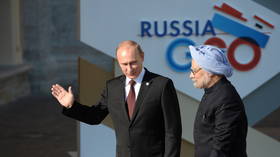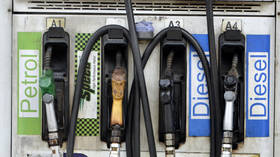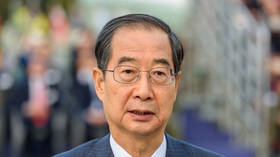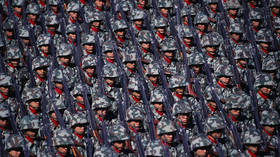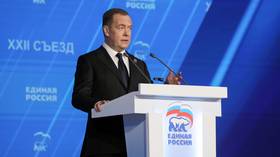As it happened: Timeline of Iran nuclear program controversy
Iran’s nuclear program and the controversy over its alleged military aspects have a long history dating back to 1957 when the US helped pre-revolution Iran kick-start its nuclear industry.
Follow RT's LIVE UPDATES on Iran nuclear deal
1958: Iran joins IAEA
Iran joined the newly-created UN nuclear watchdog, the IAEA in 1958. In 1963 it signed the Partial Nuclear Test Ban Treaty and in 1968 the Nuclear Non-Proliferation Treaty, the key international agreements that keep military nuclear technologies at bay. In 1979 the Islamic Revolution took place and the following year Tehran became preoccupied with fighting an almost decade-long war with Iraq and asserting its place in regional politics.
1980s-1990s: Post-revolution Iran struggles to finish Bushehr nuclear plant
During the 1980s and 1990s the US successfully torpedoed several attempts by Iran to strike nuclear cooperation deals with countries like China and Argentina. Tehran managed to get Russia’s help with finishing its Bushehr nuclear power plant. The project, initially started by German engineers, was unfrozen in 1995 and completed in 2010. Two additional reactors may be built at the facility, pending negotiations.

2003: Iran accused of concealing nuclear activities
2003 marked the beginning of a 12-year-long standoff between Washington and Tehran over the latter’s alleged intention to build a nuclear weapon. Iran stood accused by the IAEA of concealing its nuclear activities like the construction of enrichment facilities and nuclear reactors. Western diplomats demanded that no uranium enrichment took place on Iranian soil.
2006: IAEA refers Iran to UN Security Council
In 2006 tensions escalated with the IAEA voting to refer the Iranian nuclear program to the UN Security Council. Tehran responded by suspending inspections of facilities, which it had previously allowed as a gesture of goodwill. In the same year Iran’s hawkish then-President Mahmoud Ahmadinejad announced successful uranium enrichment.

In December 2006 the UNSC imposed sanctions demanding the suspension of enrichment activities, the first such resolution in a series of measures over the next few years. The sanctions targeted uranium mining and enrichment, entities involved in the nuclear industry and eventually arms imports.
2010-2012: Series of Iran nuclear scientist assassinations
Starting 2010 a series of assassinations of Iranian nuclear scientists and other individuals linked to the nuclear program were carried out in an apparent pattern. In several attacks motorcyclists used magnetic bombs to blow up the targets in their cars. Tehran pointed the finger at Israel, blaming its special services for the string of killings.

2012: Stuxnet virus attack on Natanz uranium enrichment facility
In 2012 The New York Times reported on an operation called Olympic Games, a joint US-Israeli plot to attack Iranian uranium enrichment facility Natanz with a computer virus called Stuxnet. The plan was a success, although the virus escaped the facility’s computer networks and was eventually discovered by cybersecurity experts. Started under George W Bush in 2006 and accelerated under the Obama administration, the operation is considered the first example of modern cyberspace offensive involving state actors.
2012: West sanctions Iran’s oil sector, banks
In 2012 Washington championed an effort to cripple the Iranian economy by denying it oil revenues and access to banking services, enrolling the EU and its other allies in the effort. It said the measures were necessary to force Iran back to negotiating a nuclear deal.
A memorable, yet not pivotal, moment in the debacle fell during the UN General Assembly session in September 2012. Israeli Prime Minister Benjamin Netanyahu spoke to world leaders calling for tougher stance against Iran. His speech was not surprising, but his prop – a cartoonish bomb diagram illustrating Iran’s alleged progress towards a nuclear weapon – sparked a furor on the Internet.

2013: Interim deal with Iran
After years of negotiations, a meeting in Geneva between Iran and members of the P5+1 group, which includes Britain, China, France, Russia, the US and Germany, produced an interim deal in 2013. Iran – led by a more moderate President Hassan Rouhani - agreed to scale down its nuclear activities in exchange for lift of sanctions. Israeli branded the agreement-in-progress “a bad deal” while Washington said it would be the best deal anyone could feasibly get. The parties aimed at reaching a comprehensive deal within a year, but the deadline was extended three times.
2015: Comprehensive deal reached
After a number of extended deadlines, a framework for a final deal was reached in Lausanne, Switzerland, in April. Under the terms of the accord, Iran agreed to reduce its uranium enrichment capabilities by two-thirds and committed to other limitations on its nuclear activities. In return – after IAEA verification – the West promised that Iran receive relief of international sanctions related to the nuclear program.
On July 14, a final deal worked along those lines was agreed to in Vienna. The parties involved in the negotiations praised it, saying it served everyone’s interests.




